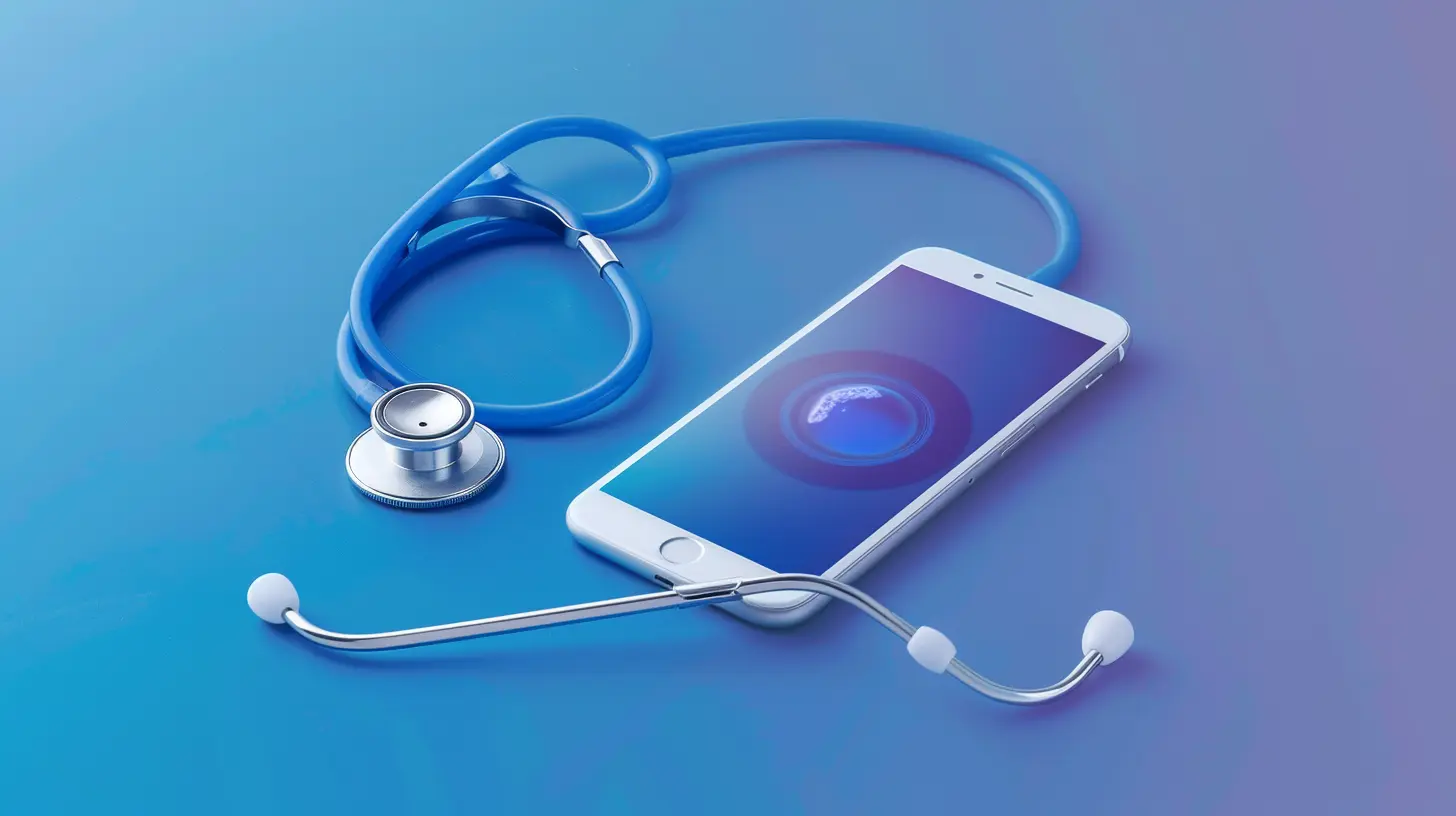How Health Tech is Disrupting Traditional Healthcare Models
21 October 2025
Let’s be honest — the traditional healthcare system can feel like it’s stuck in the past. Long waiting times, endless paperwork, and a maze of bureaucracy can make even a simple doctor’s visit a headache.
But here comes health tech, crashing through the doors like a breath of fresh air. We're talking about telemedicine, wearable devices, AI-powered diagnostics, virtual reality therapy, and even smartphone apps that track your every heartbeat. This revolution is not only fast, it’s personal — and it’s changing the way we think about healthcare from the ground up.
So, how exactly is health tech shaking up the traditional model? Let’s dive into it.
The Old-School Healthcare Model: A Quick Recap
Before we jump into the techy stuff, it helps to understand what we’re moving away from.The traditional healthcare model is built on in-person consultations, brick-and-mortar clinics, and a heavy reliance on human judgment. Think of it as the analog version of healthcare — there's a lot of paper, phone calls, and "We'll get back to you in a few days."
It’s reactive rather than proactive. You get sick, you go to the doctor, you get treated. There’s usually not much emphasis on early detection, continuous monitoring, or personalized treatment. Plus, costs can be sky-high, and accessibility — especially in rural or underserved areas — has always been a major issue.
Sound familiar? It's the model most of us grew up with. But that’s changing — fast.
Health Tech to the Rescue: What’s Changing?
Alright, let’s talk about the heroes of our story — emerging health technologies. These are tools and systems that bring together medicine and digital innovation to improve care delivery.1. Telemedicine: Healthcare That Comes to You
Remember when seeing a doctor meant driving across town, sitting in a waiting room for 45 minutes, only to spend five minutes with the doctor? Yeah, telemedicine is flipping that experience on its head.Now, you can have a video consultation with a healthcare provider right from your couch — in your pajamas. Whether it’s a routine check-up, a mental health session, or follow-up care, telehealth is making access quicker and more convenient.
What’s more? It reduces hospital crowding, slashes travel costs, and makes healthcare accessible even in remote corners of the world.
> Fun Fact: During the COVID-19 pandemic, telemedicine usage skyrocketed by over 1,000% in some regions. Safe to say — it’s not a temporary trend.
2. Wearables & Remote Monitoring: Your Body, Your Dashboard
Fitness trackers, smartwatches, glucose monitors — even smart rings now. Wearables are turning our bodies into data-generating machines, and that’s a good thing.They monitor heart rate, sleep patterns, oxygen levels, blood sugar, and even stress markers in real time. That means individuals and doctors can detect issues before they become full-blown problems.
It’s like having a mini-medical lab strapped to your wrist 24/7.
Plus, clinicians can use this continuous data to personalize treatment plans. So instead of a one-size-fits-all approach, care becomes tailored to your unique health reality.
3. Artificial Intelligence: Smarter Decisions, Faster Results
AI in healthcare can sound like science fiction — but it’s already here. From chatbots that triage patient symptoms to machines that read X-rays faster than radiologists, AI is stepping on the gas.Imagine this: You walk into a clinic with a weird pain. Instead of waiting days for test results, an AI system analyzes your scan in minutes and alerts your physician. That’s not just efficient — it could be life-saving.
AI is also playing a big role in drug discovery, clinical research, and personalized medicine. The goal? Faster diagnoses and more accurate treatments with fewer human errors.
4. Electronic Health Records (EHR): Say Goodbye to Paperwork Chaos
Raise your hand if you’ve ever had to fill out the same medical form five times at different clinics. Yeah, us too.Electronic Health Records streamline all that. With digital records, doctors across different departments and even different hospitals can access your medical history with a few clicks. It's like having your health biography in the cloud — secure, accessible, and easy to update.
This reduces duplication, saves precious time, and improves coordination between healthcare providers. More efficiency, less frustration.
5. Virtual & Augmented Reality: Therapy Enters the 3D Realm
This one’s cooler than it sounds. VR and AR aren’t just for gamers — they’re being used for real-world healthcare solutions.Surgeons use augmented reality to overlay digital images during operations for more precision. Physical therapy patients use VR games to practice movements and regain mobility. Even PTSD and anxiety sufferers benefit from immersive environments designed to help them navigate complex emotions.
It’s 21st-century healing, and it’s making a big difference.
6. Mobile Health Apps: Healthcare in Your Pocket
Remember the good old days when we had to dig through books to understand symptoms? Now, mobile apps put all that information (and a lot more) at your fingertips.Whether it’s tracking menstrual cycles, managing medications, getting mental health support, or even connecting with therapists — healthcare apps are booming. And they’re especially loved by younger folks who are more tech-savvy and wellness-focused.
The best part? Many of these apps use gamification, reminders, and personalized coaching to keep you engaged and on track — kind of like having a wellness coach in your pocket.
The Good, The Bad, and the Realistic
Let’s pause for a second. As amazing as all this sounds, we need to keep things balanced.The Upside
- Better Access: People in remote areas can now get expert care.- Faster Response: Diagnoses and treatments happen more quickly.
- Cost-Effective: Reduced hospital visits and admissions save money.
- Patient Empowerment: We can now take charge of our health like never before.
The Downsides
- Data Privacy: More tech means more data floating around. Who’s keeping it safe?- Tech Literacy: Not everyone is comfortable using complex apps or digital platforms.
- Accessibility Gaps: While tech helps some, it might leave others (like the elderly or low-income populations) behind.
- Over-Reliance on AI: Machines are smart — but they’re not human. They still need a doctor’s intuition.
Realistically, it’s about balance. Health tech isn’t here to replace doctors — it’s here to supercharge them.
What’s Driving This Disruption?
So why now? Why is health tech booming all of a sudden?- Pandemic Pressure: COVID-19 kicked telehealth into high gear.
- Consumer Expectations: We want everything faster and more personalized.
- Tech Advancements: Cloud computing, better AI, 5G — all these tools matured at the same time.
- Policy Support: Governments and insurance providers are slowly catching up and supporting digital health services.
Simply put, the stars aligned.
The Road Ahead: What’s Next?
We’re still just scratching the surface. Here’s what the future may hold:- Predictive Healthcare: Imagine getting alerts before getting sick based on your wearable data.
- AI-Driven Mental Health Support: Chatbots and virtual therapists offering 24/7 emotional support.
- Blockchain for Health Records: More secure, tamper-proof patient data.
- Personalized Medicine: Genetic profiling that tailors treatments to your DNA.
It’s a little like going from horse-and-buggy to self-driving cars — in just a few years.
Final Thoughts
Health tech isn’t just a trend — it’s a transformation. It's making healthcare smarter, faster, and more human. Sure, there are some bumps in the road, and we still need to make sure no one gets left behind. But one thing's for sure — the days of clipboards and long waiting rooms are numbered.Whether you’re a doctor, a patient, or just someone trying to stay healthy, the digital health wave is here. So why not ride it?
all images in this post were generated using AI tools
Category:
Business TrendsAuthor:

Remington McClain
Discussion
rate this article
1 comments
Brick Bryant
Health tech is revolutionizing the healthcare landscape, empowering patients and providers alike. By embracing innovation, we can break down barriers, enhance accessibility, and create a more efficient, personalized experience. The future of healthcare is bright—let's seize it!
October 30, 2025 at 1:19 PM

Remington McClain
Absolutely! Health tech is indeed transforming healthcare by improving access, efficiency, and personalization for all stakeholders. Let’s continue to embrace this innovation!


